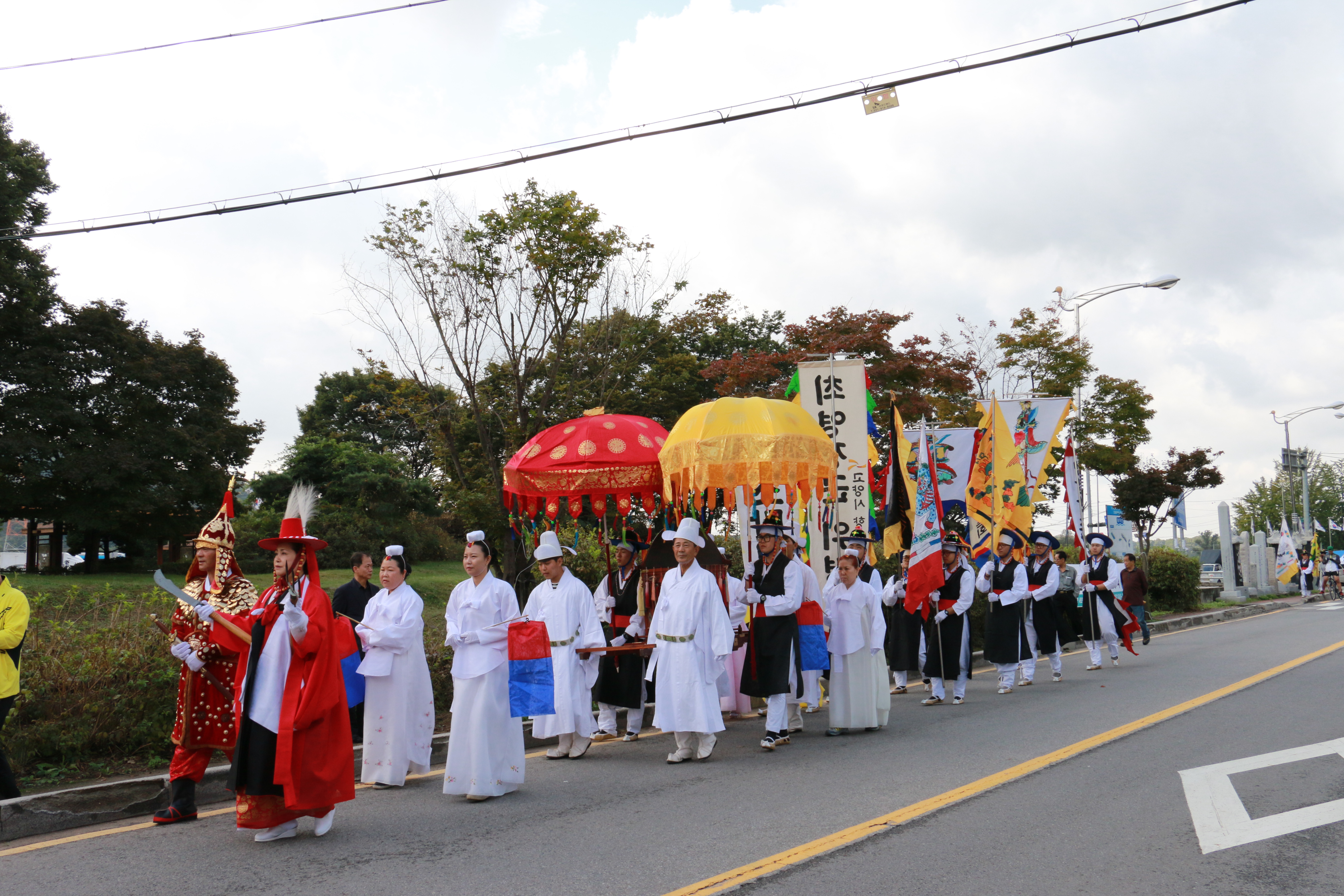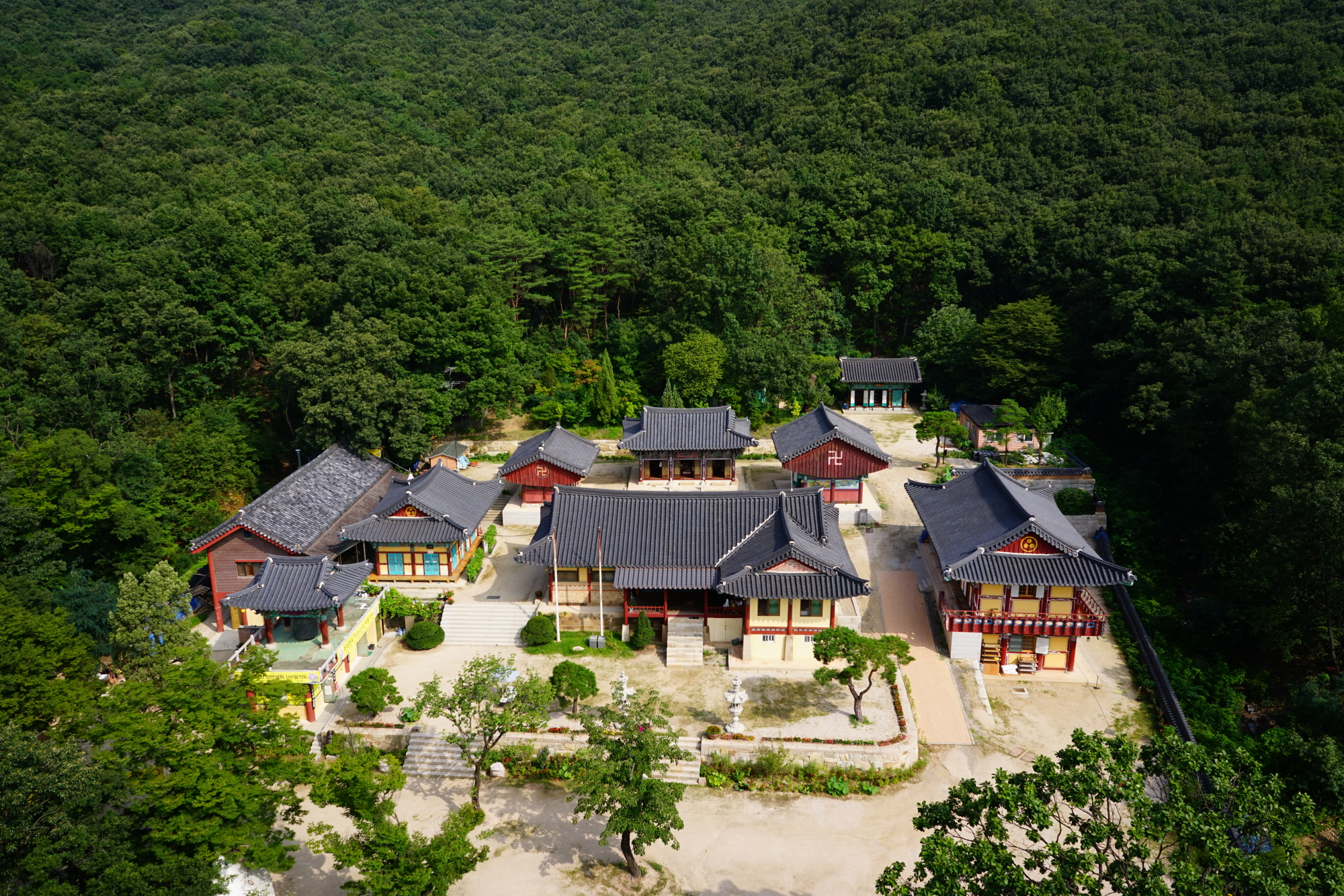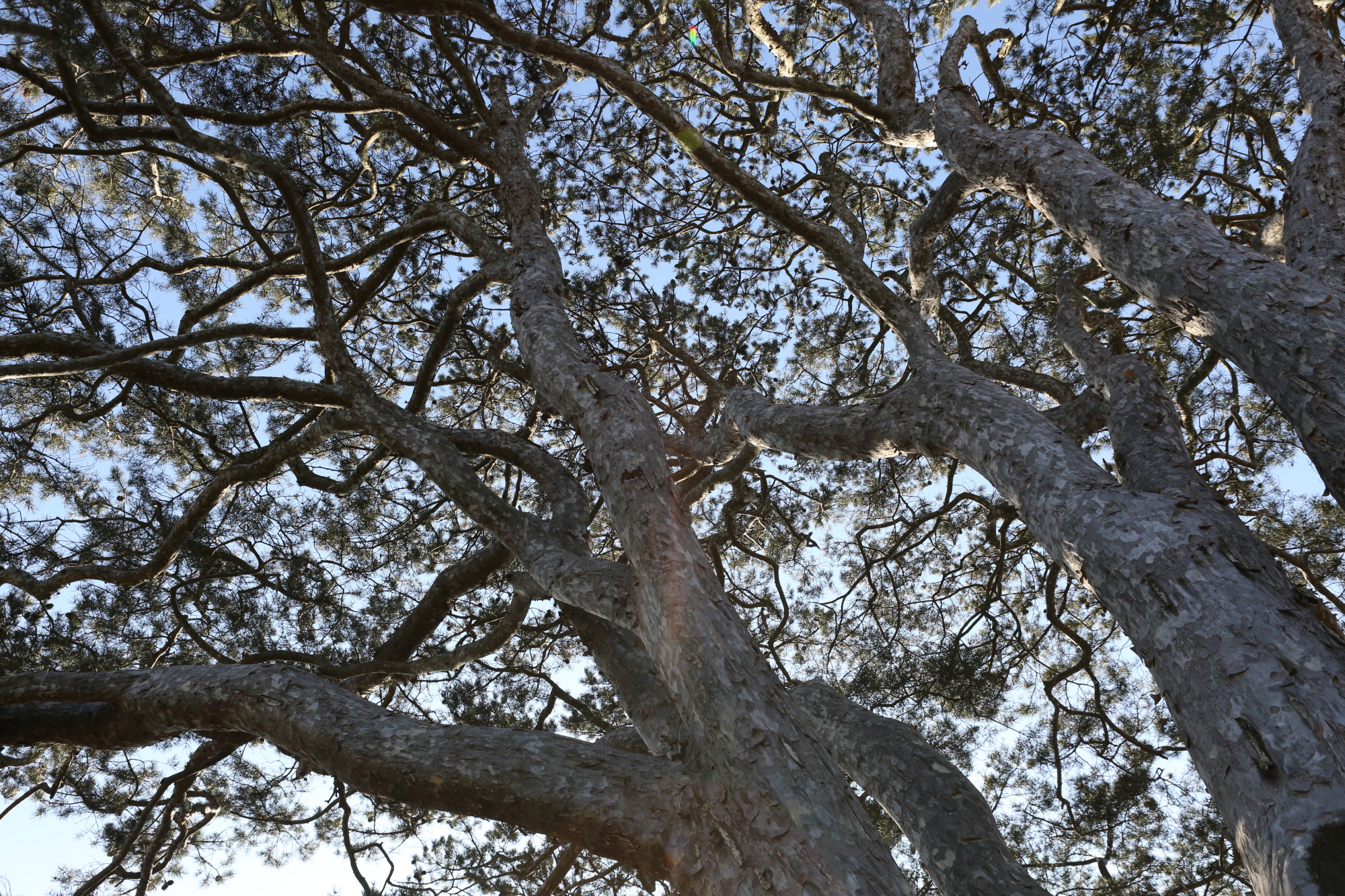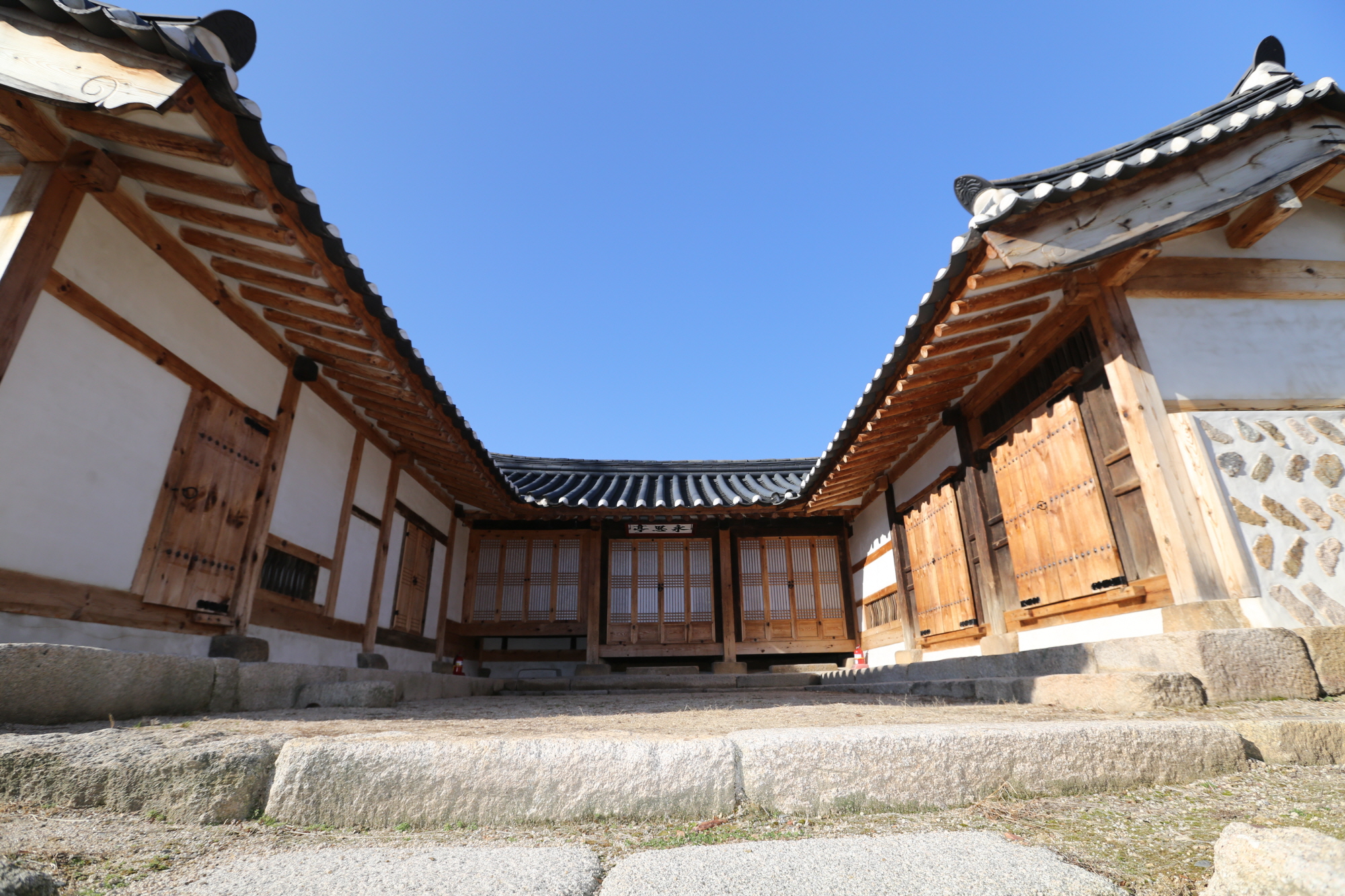![Royal Tomb of Goryeo Dynasty made small and Shabby, Royal Tomb of King Gongyang]()
Royal Tomb of Goryeo Dynasty made small and Shabby, Royal Tomb of King Gongyang
Joseon Dynasty’s royal tombs are large and glamorous. The city of Goyang has 8 Joseon royal tombs including Seosamneung Royal Tombs (Royal Tomb of King Injong, King Cheoljong, and Queen Janggyeong) and Seooreung Royal, and the Royal Tomb of King Gongyang is here as well.
It is the last royal tomb of the Goryeo Dynasty and it’s distinct from the Joseon royal tombs in its small size and shabbiness.
It consists of two tomb mounds. The left is the king’s tomb, and the right is the queen’s tomb.
The monument on which the calligraphy of “Royal Tomb of King Gongyang of Goryeo” is written is well-preserved.
Goyang City is the only place in Korea that has the royal tombs of Goryeo Dynasty and the royal tombs of Joseon Dynasty.
As for other stone figures, warrior statue, scholar statue, animal statue, milestone, etc have preserved their original form from the beginning of the Joseon Dynasty.
The Royal Tomb of King Gongyang has many interesting stories, such as the stories of Sapsal dog, King Gongyang and Half-day tomb, etc.
Let's take a closer look at the differences between the royal tombs of Joseon Dynasty and the royal tombs of Koryeo Dynasty.

Placation of General Choe Young’s spirit, Feel the energy of General Choe Young in the beautiful forest track
Goyang-dong Nuri-gil is well-known in Goyang as a beautiful road. On this road, there is the tomb site of the Goryeo’s renowned general and loyal servant, General Choe Young.
The tomb of his father, Sir Choe Won-Jik is placed alongside. Uniquely, General Choe Young’s tomb is shaped quadrangle.
On the tomb site, there are tombstone with inscription of the general’s handwriting, fence, scholar statue, cover stone, etc.
As many shamans take General Choe Young as their god, the tomb site is an important pilgrimage location for folk religion.
t the entrance of the tomb site, there are many stone mounds placed by visitors.
Passing Daeja Mountain after visiting the tomb of General Choe connects to the Tiger cave, Goyang Confucian Temple, Latin American Cultural Center, etc.
![The only Coil-Thatched-Roof House, Bamgasi Thatched-Roof House]()
The only Coil-Thatched-Roof House, Bamgasi Thatched-Roof House
A renown thatched-roof house is located at the famous new city, Ilsan.
Because it is built with chestnut tree, it is called Bamgasi Choga (Chestnut Thorn Thatched-roof House). It is a cultural heritage that has been preserved in midst of large-size city redevelopment.
The center of the roof is opened toward the sky, shaping the roof as a coil.
The sunlight and moonlight that shines here, the rain the befalls, and the starts and moon all look beautiful here.
It is the only place that has preserved its original location and height in midst of Ilsan new city development.
Kalopanax thorns, doorplate, Chestnut tree’s pillar spread around the house are preserved.
Bamgasi Choga was built in round shape to keep warm in the cold winters.
Outside the Bamgasi Choga, one can see many types of roofs like stone-tile roof, regular Hanok (Korean-style) roof, thatched-house roof, etc
The only Coil-Thatched-Roof House, Bamgasi Thatched-Roof House
A renown thatched-roof house is located at the famous new city, Ilsan.
Because it is built with chestnut tree, it is called Bamgasi Choga (Chestnut Thorn Thatched-roof House). It is a cultural heritage that has been preserved in midst of large-size city redevelopment.
The center of the roof is opened toward the sky, shaping the roof as a coil.
The sunlight and moonlight that shines here, the rain the befalls, and the starts and moon all look beautiful here.
It is the only place that has preserved its original location and height in midst of Ilsan new city development.
Kalopanax thorns, doorplate, Chestnut tree’s pillar spread around the house are preserved.
Bamgasi Choga was built in round shape to keep warm in the cold winters.
Outside the Bamgasi Choga, one can see many types of roofs like stone-tile roof, regular Hanok(Korean-style) roof, thatched-house roof, etc

Heungguksa Temple and its 10 cultural assets that revived the nation
Goyang Heungguksa is a temple that has been at the foot of Hanmi Mountain (Nogo Mountain) across from the Bukhan Mountain for thousands of years.
Many cultural heritages remain in the temple area, including the oldest wooden structure of Goyang, Heungguksa Yaksajeon Hall. The name of the temple, Heungguksa means reviving the nation.
The view of various cultural assets in midst of the Bukhan Mountain is quite beautiful.
The temple is like a treasure house of Goyang’s Buddhist cultural assets such as handwriting of the Great King Young-Jo, rare painting of the Paradise, Buddha’s statue, trees, painting, etc, It is a Buddhist temple with many things to see and enjoy, including the sounds of the Buddhist sutras of Heungguksa, the view of Bukhan Mountain and the full moon in the night time.
I will tell you the stories that are contained in the streets of Heungguk Temple through heritage tour.

Haengju Mountain Fortress was originally a stone fortress not an earthen fortress
Haengju Mountain Fortress was originally a stone fortress not an earthen fortress
Haengju Mountain Fortress was originally a stone fortress not an earthen fortress Haengju Mountain Fortress, a representative cultural asset of Goyang City, is a castle built more than 1,000 years before the Great Victory of Haengju of General Kwon Yul. It is located next to the Han River, and Deogyang Mountain rises high, so we can see Bukhan Mountain, Gwanak Mountain and Seomak Mountain.
At the summit, the Memorial Stone for Great Victory of Haengju enscripted by Han Seok-bong, is also designated as cultural asset.
There are pavilions, chairs, relics exhibition hall, and earthen fortresses in various places, making it famous for cultural heritage that are harmonized with the nature.
There are lots of interesting stories such as Haengju skirts, Gneral Stone, and the anchovy story.
At the time of the Japanese Invasion of 1592, there were various high-tech weapons such as large magical-machine arrows, freight cars, narrow guns, etc.
With these weapons, our small army was able to defeat the Japanese forces that was 10 times greater in number.
Goyang City has been carrying out Haengju Cultural Festival and Celebrations of Haengju Victory in order to commemorate the proud victory.
Take a look around Haengju Mountain Fortress during the times of activities such as ceremony, a festival, or a night opening.

Visit Seooreung Royal Tomb, a World Heritage Site
Seooreung Royal Tomb means the 5 royal tombs in the west of Seoul. There are eight tombs in total with a total area of over six hundred thousand pyeong.
The representative tomb of Seooreung is Myeongryung of the Great King Sukjong. Myeongryung also includes the tombs of Queen Inhyeon of the Min Family and Queen Inwon of the Kim Family.
is the representative place of the Joseon royal tombs in the latter part of the Joseon Dynasty. High steps and stone steps, jeongjagak(a T-shaped house for sacrifice before a royal tomb), and the placement of the tombs have preserved their original shape, just as in the textbooks of the Joseon Dynasty.
Inside Myeongryeong, there is a jaesil, a place to prepare ancestral rituals, which is the biggest Hanok(Korean-style) building in Goyang area.
nside, there is Ikneung where pine trees are grown tall and dense. Ikneung's jeongjagak has a wing chamber, which is difficult to see in other tombs.
Ikneung is the tomb of Great King Sukjeong's first queen, Queen In-kyung who died at an early age.
Kyeongneung is the tomb of the Great King Dukjeong and his wife, Queen Insu.
Among the royal tombs of Joseon, it is unique for because the tomb location of the king and queen were switched.
Also, the tomb of the king is small and shabby while the tomb of the queen is extravagant and large.
With various unique features, it is a cultural heritage valuable to royal tomb research.
Seooreung is also home to early Joseon royal tomb of Changneung, built in Dongwon-igang method (tomb in which the king and queen share various annex structure).
Changneung is the tomb of King Yejong and his wife Queen An-soon.
It is the innermost place in Seooreung and only a few people visit it, but it is the best place to enjoy the cultural heritage with nature in quietness.
A track filled with loose-flower hornbeam tree begin nearby, which is great for a short walk.
In front of Changneung, there is Hongneung of King Yongjo's wife, Queen Jeongseong.
Out of all Joseon royal tombs, it is the only royal tomb of where the left mound of the queen's tomb is left empty.
Besides these royal tombs, there is Daebinmyo, the tomb of Huibin Jang, as well as Soonchangwon and Sookyeongwon at Seooreung.

Do you know Baeksong, the white pine tree
There is Baeksong, a white pine tree, that is over 500 years old in Deoki-dong, Ilsan Seo-gu of this city.
It is known to have been planted by General Choi Soo-won during King Sejong of Joseon Dynasty. It is the only natural monument of Goyang City.
Registered as National Natural Monument No 60, and it is popular for its unique shape evident from afar.
Baeksong has unique color, shape of pinecone, pine leaves, etc.
It is also the symbolic tree of Goyang City.
Let's look into the stories hidden in the tree through field exploration of the cultural asset.

Yeongsajeon, Beautiful Hanok of Goyang City
This is the most beautiful Hanok (Korean style house) cultural asset in our city.
This building is Yeongsajeong Pavilion.
Built in 1709, this Hanok is home to many stories.
The ridge beam plate, the U-shaped house, the door and its latch, and the Hanok tile roof that blends well with persimmon trees, etc are all very beautiful.
Memorial Stone of Ju-shin Kim in front of the main gate, and the peak of Bukhan Mountain seen from the back of pavilion looks like a beautiful landscape painting.
I hope to bring you to visit Yeongsajeong Pavilion in autumn when the permission trees are full of ripe fruits.





